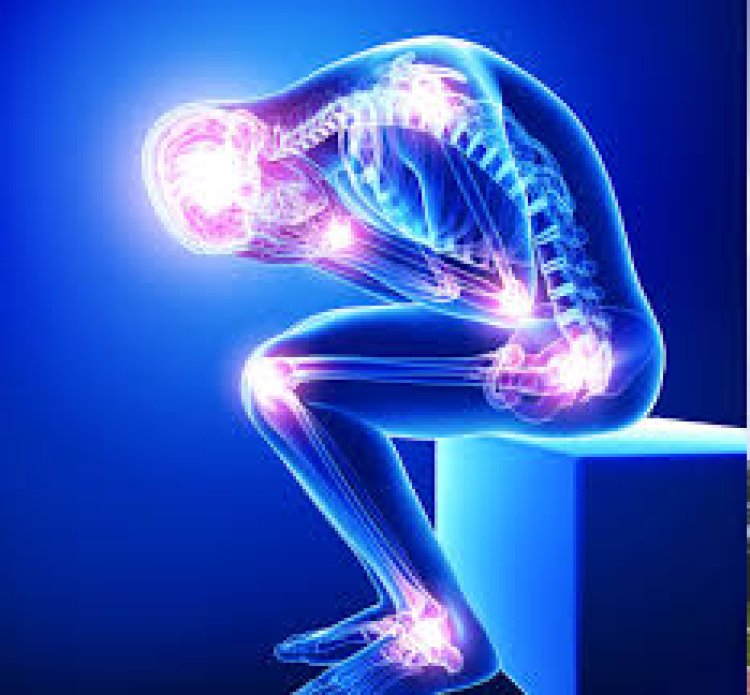Pain Management and the Role of Reflexology
Reflexology can be integrated into a comprehensive pain management plan alongside conventional treatments.
Share this Post to earn Money ( Upto ₹100 per 1000 Views )

Pain is a multifaceted experience that can significantly impact an individual's quality of life. Whether due to injury, chronic conditions, or stress, managing pain effectively is crucial for overall well-being. Traditional methods, including medications and physical therapy, have long been the mainstay of pain management. However, alternative therapies, such as reflexology, are gaining recognition for their potential in alleviating pain. This article explores the role of reflexology in pain management, its principles, benefits, and the scientific evidence supporting its efficacy.
What is Reflexology?
Reflexology is an ancient therapeutic technique based on the concept that specific points on the feet, hands, and ears correspond to various organs and systems of the body. By applying pressure to these reflex points, practitioners aim to promote healing and restore balance to the body. Reflexology is rooted in the belief that energy pathways, or "meridians," can be cleared of blockages to enhance overall health and alleviate discomfort.
The Mechanisms of Reflexology
The theoretical basis of reflexology involves several key mechanisms:
Nerve Stimulation:
Reflexology stimulates the nervous system through the application of pressure on reflex points. This stimulation can enhance nerve function and promote the release of endorphins, the body’s natural pain management.
Increased Circulation:
Pressure applied to reflex points can improve blood flow and lymphatic circulation, which helps in reducing inflammation and facilitating the delivery of nutrients to tissues.
Stress Reduction:
Reflexology is known for its relaxation benefits. By reducing stress and promoting relaxation, reflexology can indirectly help manage pain, as stress is a common exacerbator of chronic pain conditions.
Benefits of Reflexology for Pain Management
Pain Relief:
Many individuals report experiencing relief from various types of pain, including chronic pain, back pain, and headaches, through reflexology. The therapy’s ability to stimulate endorphin production and improve circulation contributes to this effect.
Enhanced Relaxation:
Reflexology sessions often induce a deep state of relaxation. This relaxation can reduce muscle tension and alleviate pain associated with stress and anxiety.
Improved Sleep Quality:
Pain can interfere with sleep, leading to a vicious cycle of discomfort and fatigue. Reflexology may improve sleep quality by promoting relaxation and reducing pain, thereby enhancing overall well-being.
Holistic Approach:
Reflexology considers the whole person rather than just the symptoms. This holistic approach can address underlying issues contributing to pain, such as stress, poor posture, or lifestyle factors.
Scientific Evidence Supporting Reflexology
While reflexology is widely used and many individuals report positive outcomes, scientific evidence supporting its efficacy is mixed. Research on reflexology includes both clinical trials and anecdotal evidence, and findings vary.
Clinical Trials:
Some studies suggest that reflexology can be beneficial for pain management. For example, a 2015 study published in Pain Medicine found that reflexology significantly reduced pain and improved quality of life in patients with cancer-related pain. Another study published in Complementary Therapies in Medicine in 2017 indicated that reflexology may help reduce pain and anxiety in patients undergoing hemodialysis.
Systematic Reviews:
Systematic reviews of reflexology research have produced varied results. A 2014 review in BMC Complementary and Alternative Medicine found moderate evidence that reflexology might provide pain relief for certain conditions, such as headaches and dysmenorrhea (menstrual pain). However, the review also noted that more high-quality research is needed to establish definitive conclusions.
Anecdotal Evidence:
Many individuals who use reflexology report significant pain relief and improved well-being. Anecdotal evidence, while valuable, is not a substitute for rigorous scientific research but suggests that reflexology may be a beneficial complementary therapy for pain management.
Integrating Reflexology into Pain Management
Reflexology can be integrated into a comprehensive pain management plan alongside conventional treatments. Here are some considerations for incorporating reflexology:
Consultation with Healthcare Providers:
Before starting reflexology, it is essential to consult with healthcare providers, especially if you have chronic or severe pain conditions. Reflexology should complement, not replace, conventional medical treatments.
Choosing a Qualified Practitioner:
Seek a licensed and certified reflexologist with experience in pain management

. Professional training ensures that the practitioner uses appropriate techniques and adheres to safety standards.
Personalization of Treatment:
Reflexology is highly individualized. A practitioner will tailor the sessions to address specific pain issues and personal needs. Regular sessions may be necessary to achieve the desired results.
Monitoring and Adjusting:
Monitor your response to reflexology and discuss any changes with your healthcare provider. Adjustments to the treatment plan may be needed based on your progress and overall health.
In Summary
Reflexology offers a promising complementary approach to pain management, with its potential benefits in pain relief, stress reduction, and overall well-being. While scientific evidence is still evolving, many individuals find reflexology to be a valuable addition to their pain management regimen. As with any therapy, it is essential to approach reflexology with an open mind and integrate it thoughtfully into a comprehensive treatment plan. By doing so, individuals may enhance their quality of life and manage pain more effectively.














